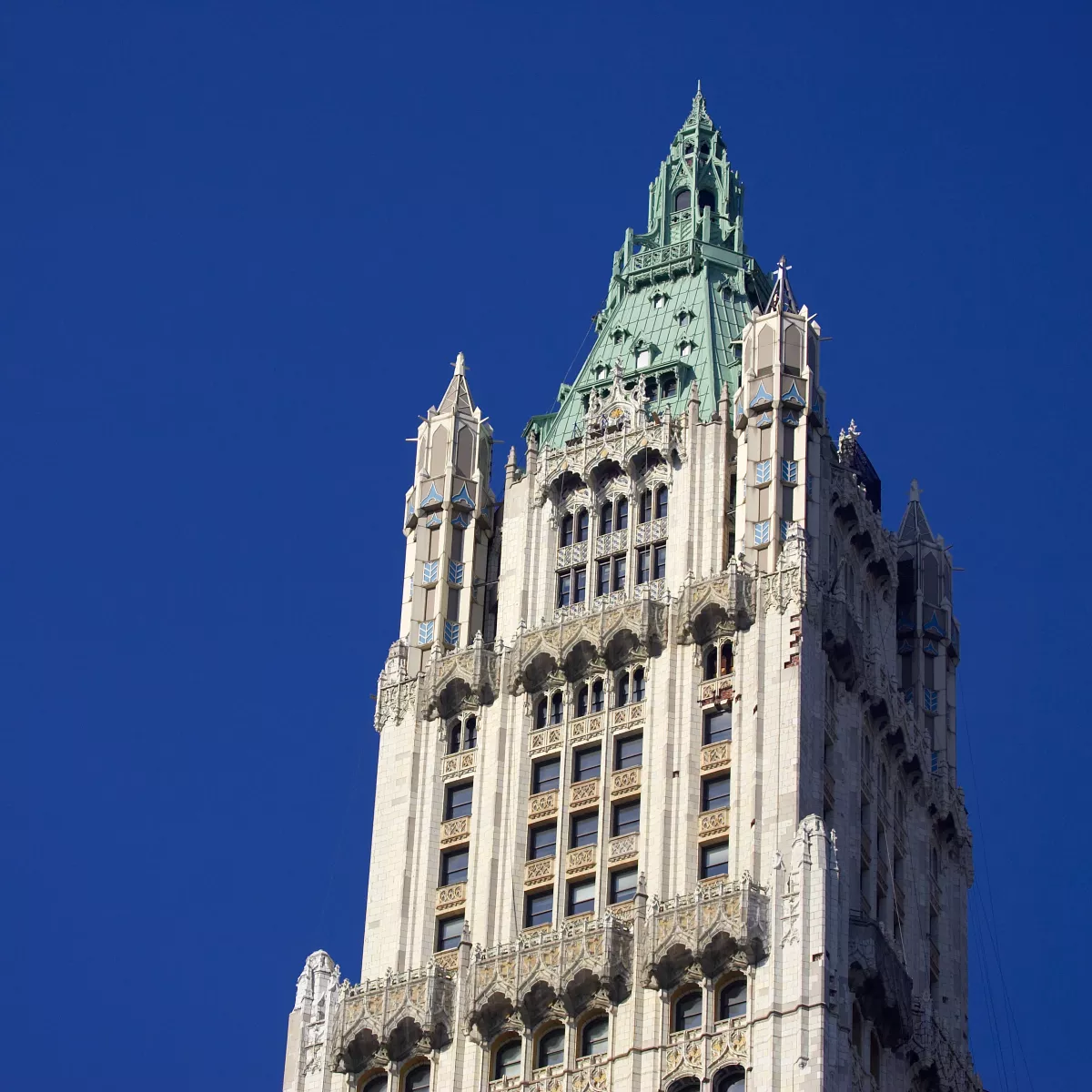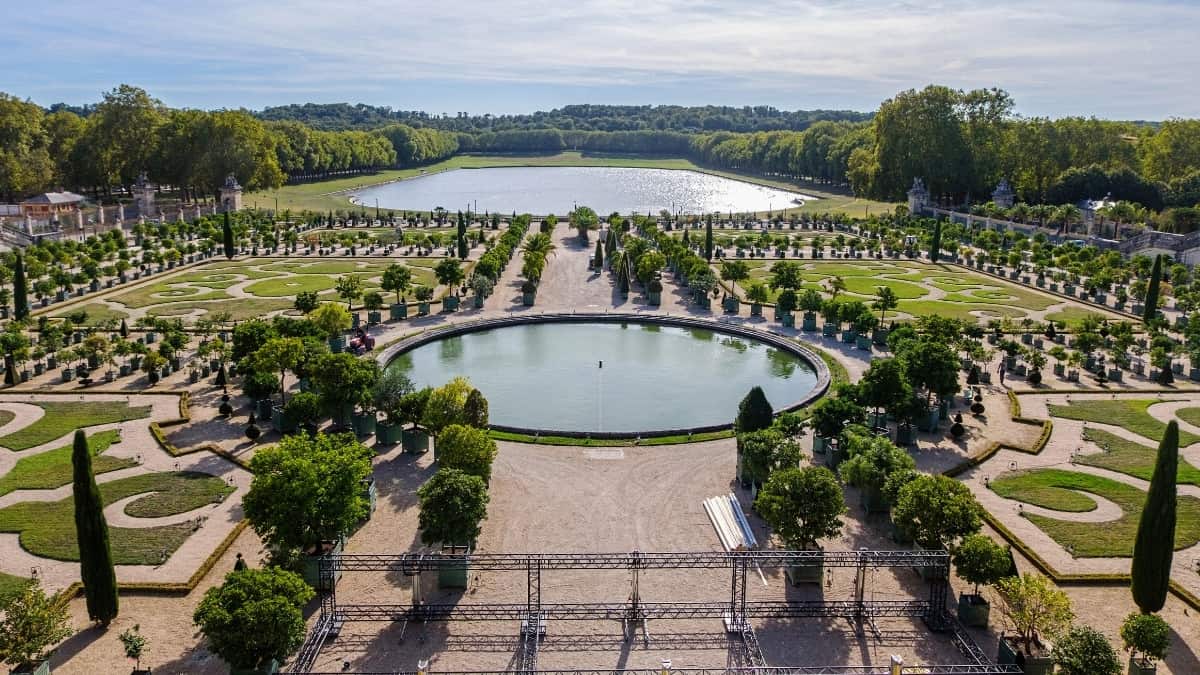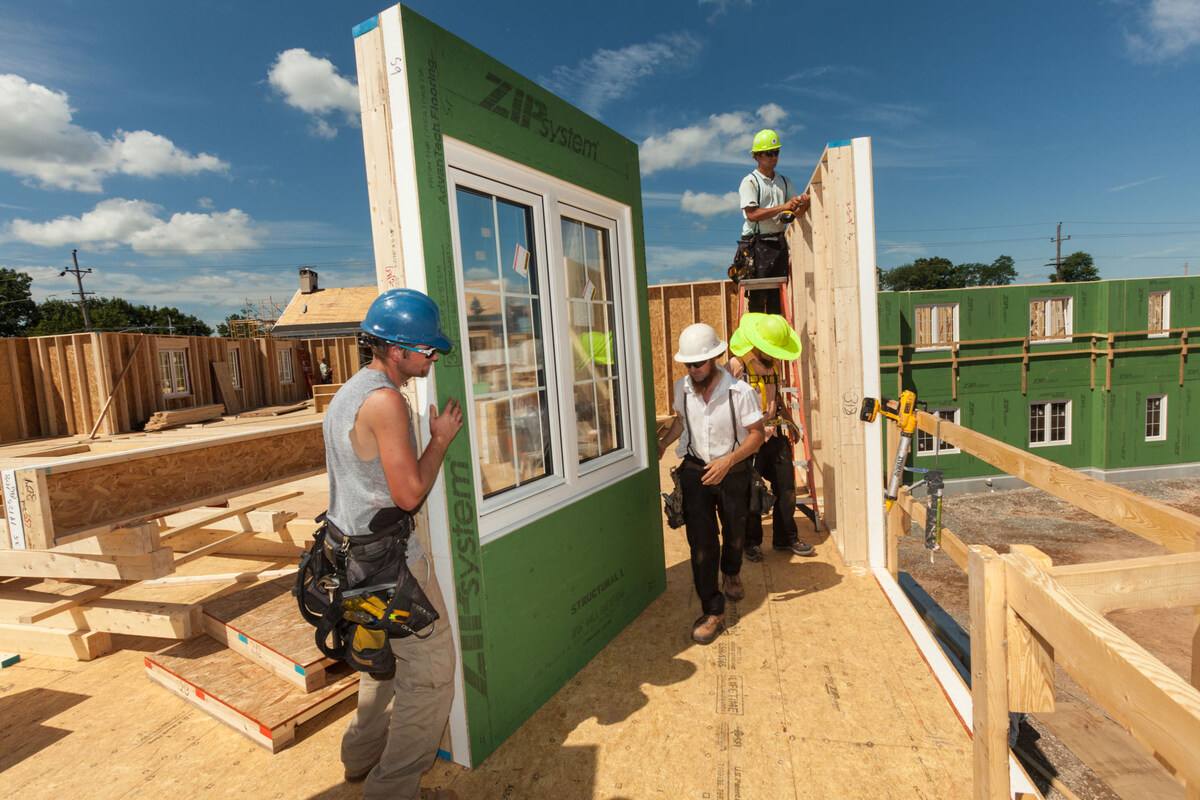Home>diy>Building & Construction>Who Was The Architect Of The Empire State Building


Building & Construction
Who Was The Architect Of The Empire State Building
Modified: December 7, 2023
Discover the brilliant mind behind the iconic Empire State Building. Explore the architectural genius and construction marvel of this legendary building.
(Many of the links in this article redirect to a specific reviewed product. Your purchase of these products through affiliate links helps to generate commission for Storables.com, at no extra cost. Learn more)
Introduction
The Empire State Building is an iconic structure that has become synonymous with the bustling cityscape of New York City. Standing at an impressive height of 1,454 feet (including its antenna), this architectural marvel has captured the imagination of people around the world for decades. It has been featured in countless films, books, and photographs, and it continues to be a symbol of human achievement and innovation.
The construction of the Empire State Building was a remarkable feat of engineering and design. From its early history to the vision behind its creation, this article will explore the story of the Empire State Building and shed light on the architect responsible for its timeless design.
As we delve into the history of this magnificent structure, we will uncover the challenges faced during its construction and the innovative solutions that were implemented. From the architectural design to the engineering marvels, we will explore what makes the Empire State Building an enduring symbol of human ingenuity.
Come along on a journey through time as we discover the captivating story of the Empire State Building, its visionary architect, and the lasting impact it has had on the world of architecture and engineering.
Key Takeaways:
- The Empire State Building, designed by architect William F. Lamb, stands as a timeless symbol of human achievement and architectural brilliance, influencing skyscraper design and captivating visitors with its Art Deco elegance.
- The building’s rapid construction, innovative engineering solutions, and enduring legacy as a cultural icon have solidified its place as a beacon of hope, progress, and ambition, inspiring generations to push the boundaries of innovation in architecture and engineering.
Read more: How Many Stairs In The Empire State Building
Early History of the Empire State Building
The history of the Empire State Building dates back to the 1920s, a time when New York City was experiencing rapid economic growth and bustling urban development. During this period, an intense competition arose among developers to construct the tallest building in the world, with the intention of showcasing their city’s prominence and success.
The site where the Empire State Building stands today was originally occupied by the Waldorf-Astoria Hotel. In 1929, the hotel was sold and demolished to make way for a new skyscraper. The architects and developers behind the project drew inspiration from the design and success of the nearby Chrysler Building, which had been completed just a year earlier.
Construction of the Empire State Building began in March 1930 and was completed just over a year later, on May 1, 1931. The project was undertaken by the architectural firm Shreve, Lamb, and Harmon Associates, with William F. Lamb at the helm as the lead architect. The building’s construction was expedited due to fierce competition in the race to be the tallest building in the world, and the Empire State Building achieved this feat upon its completion.
During its early years, the Empire State Building faced economic challenges due to the Great Depression, which led to high vacancy rates. However, over time, the iconic building gained popularity and became a symbol of hope and resilience during difficult times.
Today, the Empire State Building stands proudly as a testament to the legacy and ambition of its creators. Its rich history and significance in popular culture have solidified its position as one of the most recognizable landmarks in the world.
The Vision behind the Creation of the Empire State Building
The vision behind the creation of the Empire State Building was to construct a colossal skyscraper that would serve as a symbol of progress, innovation, and economic prosperity. The building was intended to be a monument to human achievement and a testament to the ambition and creativity of its creators.
The primary motivation for building such a towering structure was to claim the title of the tallest building in the world. The developers and architects wanted to surpass the height of the nearby Chrysler Building, which had recently claimed that distinction.
The vision for the Empire State Building also aimed to create a building that would cater to the needs of businesses and tenants, providing them with modern amenities and cutting-edge technology. The designers sought to optimize the space within the building to accommodate a diverse range of offices, retail spaces, and other facilities.
Another crucial aspect of the vision was to make the Empire State Building a symbol of New York City’s dominance on the global stage. The building was strategically located in midtown Manhattan, a prime location that would become synonymous with the bustling heart of the city. It was designed to be a focal point that would draw attention and admiration not only from locals but from visitors worldwide.
Furthermore, the Empire State Building aimed to showcase architectural and engineering excellence. The design incorporated sleek Art Deco elements that were popular during that period, combining elegance and modernity. The architects also had to consider the structural challenges of constructing such a tall building, including wind resistance and the weight of the materials.
Overall, the vision behind the creation of the Empire State Building was multi-faceted. It sought to capture the essence of progress, economic prowess, and architectural brilliance. Today, the Empire State Building stands tall as a testament to the vision and determination of its creators, continuing to inspire awe and admiration for generations to come.
The Architectural Design of the Empire State Building
The architectural design of the Empire State Building is a remarkable fusion of elegance and grandeur. Designed in the Art Deco style, the building stands as an emblem of the 1930s aesthetic and showcases intricate details that embody the spirit of the era.
The building features a setback design, a style popular in New York during the early 20th century. This design was implemented to allow for more sunlight to reach the streets below and reduce the shadow cast by the towering structure.
One of the most distinctive features of the Empire State Building is its crown, which was inspired by the Ziggurats of ancient Mesopotamia. The ornamental top of the building adds a majestic touch and features stylized eagles and other decorative elements.
The exterior of the building showcases the use of Indiana limestone and granite, giving it a timeless and sturdy appearance. The limestone façade exhibits exquisite carvings and intricate detailing, reflecting the craftsmanship and attention to detail of the architectural team.
The lobby of the Empire State Building is a masterpiece in itself, with its opulent Art Deco styling. Upon entering the building, visitors are greeted by a grand marble staircase, ornate ceiling murals, and elegant bronze and aluminum accents. The design of the lobby creates an atmosphere of glamour and sophistication.
In terms of functionality, the architectural design of the Empire State Building aimed to maximize space and efficiency. The building features a central core structure, allowing for flexibility in office layouts and providing ample natural light through the large windows that surround the building.
Overall, the architectural design of the Empire State Building is a testament to the vision and creativity of its architects. The elegant Art Deco style and intricate detailing combine to create a timeless masterpiece that continues to captivate visitors and stand as a architectural landmark in the New York City skyline.
The Role of Architect William F. Lamb
Architect William F. Lamb played a pivotal role in the creation and design of the Empire State Building. As the lead architect of the project, Lamb was responsible for overseeing its construction and ensuring that the vision for the building was brought to life.
Lamb was a talented and experienced architect who belonged to the architectural firm Shreve, Lamb, and Harmon Associates. He had previously worked on numerous notable projects, but the Empire State Building would become his most famous and enduring work.
Working closely with the developers and engineers, Lamb was tasked with translating their vision into architectural plans that embodied both elegance and efficiency. He successfully combined the Art Deco style with structural considerations, resulting in a building that would become an iconic symbol of the era.
Lamb’s architectural expertise and attention to detail are evident not only in the external facade of the Empire State Building but also in its interior spaces. He meticulously designed the lobby, creating a grand entrance that exuded luxury and sophistication.
In addition to his design contributions, Lamb played a crucial role in overcoming the structural challenges associated with constructing such a tall building. He worked closely with the engineering team to develop innovative solutions, ensuring that the structure was stable and resistant to wind forces.
Thanks to Lamb’s leadership and expertise, the Empire State Building was completed in an astonishingly short amount of time. Despite the economic challenges of the Great Depression, Lamb and his team managed to construct a skyscraper that would soon become an icon of American architecture.
Lamb’s contributions to the Empire State Building’s design and construction garnered him widespread recognition. He received the Medal of Honor from the Architectural League of New York for his exceptional achievement in the field of architecture.
The legacy of William F. Lamb can still be seen in the enduring magnificence of the Empire State Building. His architectural prowess, attention to detail, and innovative design solutions have solidified his place as one of the foremost architects of his time.
The architect of the Empire State Building was William F. Lamb, who designed the iconic skyscraper in the Art Deco style.
The Construction of the Empire State Building
The construction of the Empire State Building was a monumental undertaking that showcased the ingenuity and determination of its builders. The rapid pace at which the building was erected was a testament to the collaborative efforts of the construction crew, engineers, and architects.
To meet the ambitious timeline, the construction process made use of innovative techniques and materials. The foundation was constructed using a combination of concrete and steel pilings, providing a stable base for the towering structure.
One of the key challenges faced during construction was the sheer height of the building. In order to achieve the desired height, a system of steel beams and columns was used to support the weight of the floors above. This steel framework allowed for quick and efficient construction, as it could be rapidly assembled on-site.
The Empire State Building was the first ever building to make use of an integrated electrical system. This system allowed for seamless communication between various components of the building, such as lighting, ventilation, and security systems. It was a groundbreaking innovation that significantly contributed to the building’s functionality and efficiency.
The construction crew worked tirelessly day and night to ensure that the building progressed at an impressive rate. At its peak, the construction crew consisted of thousands of workers, including ironworkers, masons, electricians, and laborers. Their dedication and hard work allowed the building to be completed in record time.
Despite the challenges posed by the Great Depression, the construction of the Empire State Building was completed in just one year and 45 days. This tremendous feat demonstrated the resilience and determination of the people involved in the project.
Overall, the construction of the Empire State Building is a testament to human innovation and determination. The use of advanced construction techniques, the integration of electrical systems, and the unprecedented pace at which it was completed all contribute to the building’s status as an architectural marvel.
The Engineering Marvels of the Empire State Building
The Empire State Building is not only a testament to architectural brilliance but also an engineering marvel. The engineers involved in its construction had to overcome numerous challenges and incorporate innovative techniques to create a structure that could withstand the forces exerted on a building of such immense height.
One of the significant engineering challenges faced during the construction of the Empire State Building was managing wind forces. To address this, an advanced wind tunnel testing program was conducted to determine the building’s shape and design in order to minimize wind sway. The engineers implemented setback designs and added additional steel bracing to provide stability and reduce the impact of wind on the building.
Another impressive engineering feat was the rapid construction of the building itself. The construction crew utilized an assembly-line process, with different teams working simultaneously on various sections of the building. This allowed for efficient and speedy construction, with some parts of the building being completed in just a few days.
The building’s foundation was an engineering marvel in itself. Constructed using over 60,000 cubic yards of concrete and 10,000 steel pilings, the foundation provided a stable base to support the weight of the immense structure above. The sheer scale of the foundation was a remarkable achievement of engineering and construction coordination.
The Empire State Building was also equipped with cutting-edge technology for its time. It featured a centralized electrical system, which allowed for seamless integration and control of various systems within the building, such as lighting, air conditioning, and communication. This integration improved efficiency and convenience for the occupants of the building.
Additionally, the Empire State Building was designed to handle the vertical transportation needs of its occupants efficiently. It boasted 73 elevators, including express elevators that could reach the top floors in under a minute. The elevators were equipped with sophisticated safety systems to ensure the comfort and security of the building’s occupants.
The engineering marvels of the Empire State Building extend beyond its construction. The building has undergone various modernization efforts over the years, including the installation of energy-efficient systems and sustainability initiatives to reduce its environmental impact and improve its overall efficiency.
Overall, the Empire State Building stands as a testament to the brilliance and ingenuity of the engineers involved in its design and construction. Their innovative solutions and unwavering dedication have resulted in a structure that continues to awe and inspire people around the world.
The Impact and Legacy of the Empire State Building
The Empire State Building has had a profound impact on the world of architecture, engineering, and popular culture. It has become an enduring symbol of human achievement and a beloved icon of New York City.
Architecturally, the Empire State Building revolutionized the concept of skyscrapers. It was a pioneer in the use of modern construction techniques, such as a steel frame and setback design, which became a template for future tall buildings. Its sleek Art Deco style and attention to detail have influenced countless architectural designs since its completion.
The Empire State Building’s impact extends beyond its groundbreaking design. As a cultural icon, it has been featured in numerous films, books, and works of art. Its distinctive silhouette against the New York City skyline has become instantly recognizable around the world, symbolizing the energy and ambition of the city.
The building’s observation decks, located on the 86th and 102nd floors, have provided breathtaking views of New York City for millions of visitors over the years. It has become a must-visit attraction for tourists, offering a glimpse into the city’s soaring heights and panoramic vistas.
Throughout its history, the Empire State Building has also played a significant role in various historical events. During World War II, it served as a vital radio and communication tower, relaying messages and signals across the Atlantic. It also served as a beacon of hope during times of crisis, such as the annual lighting of its tower in support of charitable causes.
The Empire State Building’s commitment to sustainability has further contributed to its legacy. In recent years, the building has undergone sustainable renovations and energy-efficient upgrades, becoming a pioneer in energy conservation within the skyscraper industry. It has achieved LEED Gold certification, proving that even historic buildings can adapt and embrace environmentally friendly practices.
The legacy of the Empire State Building has inspired numerous tall-building projects around the world. Its impact on the field of architecture and engineering continues to be felt, with skyscrapers striving to reach new heights while maintaining functionality and sustainability.
Overall, the Empire State Building’s impact and legacy are far-reaching. As a symbol of architectural brilliance, cultural icon, and beacon of innovation, it has left an indelible mark on the world. It serves as a reminder that with vision, determination, and creativity, human achievement knows no bounds.
Conclusion
The Empire State Building stands as an enduring testament to human ingenuity, architectural brilliance, and engineering excellence. From its early history to the vision behind its creation, this iconic structure has left an indelible mark on the world of architecture, engineering, and popular culture.
Designed by architect William F. Lamb and constructed in an astonishingly short time, the Empire State Building represents the ambition and resilience of its creators. Its Art Deco styling, setback design, and ornate details showcase the elegance and grandeur of the era, while its engineering marvels, such as wind resistance measures and a centralized electrical system, demonstrate groundbreaking innovation.
The Empire State Building’s impact and legacy reach far beyond its physical presence. It has become an emblem of New York City, inspiring countless artists, filmmakers, and creators. Its observation decks offer breathtaking views and attract millions of visitors, while its role in historical events and dedication to sustainability further enhance its significance.
Architecturally, the Empire State Building has influenced skyscraper design, serving as a template for future tall buildings. Its cultural significance and recognition as an icon of human achievement have made it a symbol of hope, progress, and ambition.
The legacy of the Empire State Building will continue to inspire generations to come. Its enduring presence in the New York City skyline serves as a reminder of our capacity to overcome challenges and push the boundaries of innovation.
As we marvel at the towering structure, let us remember the vision, creativity, and collaboration that brought the Empire State Building to life. It stands as a testament to the brilliance of its architect, the dedication of its construction crew, and the engineering marvels that made it possible.
In the ever-evolving world of architecture and engineering, the Empire State Building will forever hold a special place. It is a symbol of human achievement, a cultural icon, and a beacon of inspiration for those who dare to dream big and pursue greatness.
Frequently Asked Questions about Who Was The Architect Of The Empire State Building
Was this page helpful?
At Storables.com, we guarantee accurate and reliable information. Our content, validated by Expert Board Contributors, is crafted following stringent Editorial Policies. We're committed to providing you with well-researched, expert-backed insights for all your informational needs.















0 thoughts on “Who Was The Architect Of The Empire State Building”